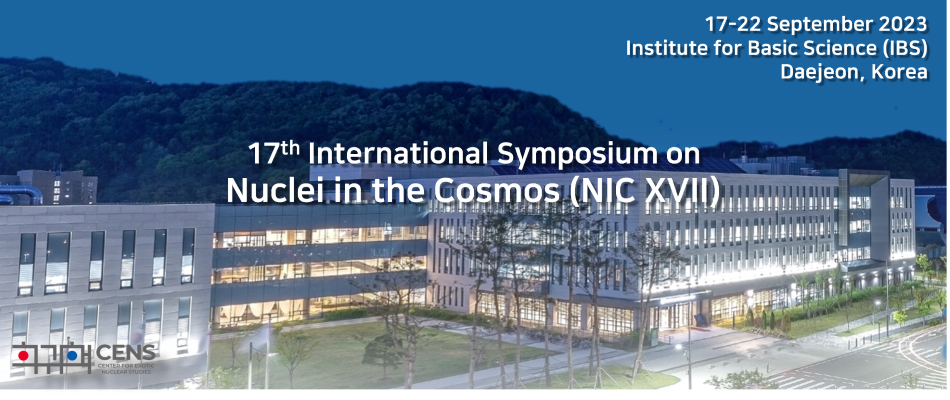Speaker
Description
The rapid (r) neutron-capture process produces half of the elements heavier than iron and is located on the neutron-rich side of the nuclear chart. Conversely, light nuclei on the neutron-deficient side may be produced in the neutrino-driven rapid-proton capture (vp) process. Considering the r-process, promising site candidates such as core-collapse supernovae (CCSNe) and neutron star mergers still show large discrepancies between observed and calculated abundances. The calculations rely on neutron-capture cross sections which depend on two reaction processes: direct radiative capture and compound nuclear (CN) mechanism. Neutron capture on $^{130}$Sn strongly influences the final abundances around the second and third r-process peaks, however, the CN mechanism lacks empirical data. Considering the vp-process proposed to occur in the ejecta of CCSNe, this is a promising solution to synthesize isotopes not adequately produced in the rapid-proton (rp) capture process, particularly $^{92,94}$Mo and $^{94,96}$Ru. The $^{56}$Ni(n,p)$^{56}$Co reaction is a crucial branching point between the vp- and rp- processes and thus governs the abundances of heavier elements, however, its cross section lacks measurement. To address these knowledge gaps of the $^{130}$Sn(n,γ) and $^{56}$Ni(n,p) reactions, the surrogate technique was employed using (d,p) transfer reactions on $^{130}$Sn and $^{56}$Ni, respectively, at the BigRIPS-OEDO beamline housed at RIBF in RIKEN, Japan. The radioactive beams were produced and separated by the BigRIPS accelerator. Using OEDO the $^{130}$Sn ($^{56}$Ni) beam was decelerated to ~ 22 (15) MeV/u and focused onto a CD$_{2}$ solid target. Light particles were detected at backward lab angles using the TiNA array. Heavy reaction products were momentum-analyzed by the SHARAQ spectrometer and identified using the B$\rho$-dE-range technique. This approach has a distinct advantage whereby the gamma-emission probabilities of compound nuclear states may be determined with no gamma-ray detection necessary. In this talk, the experimental procedure and preliminary results are presented, with an emphasis on the capabilities of OEDO.

